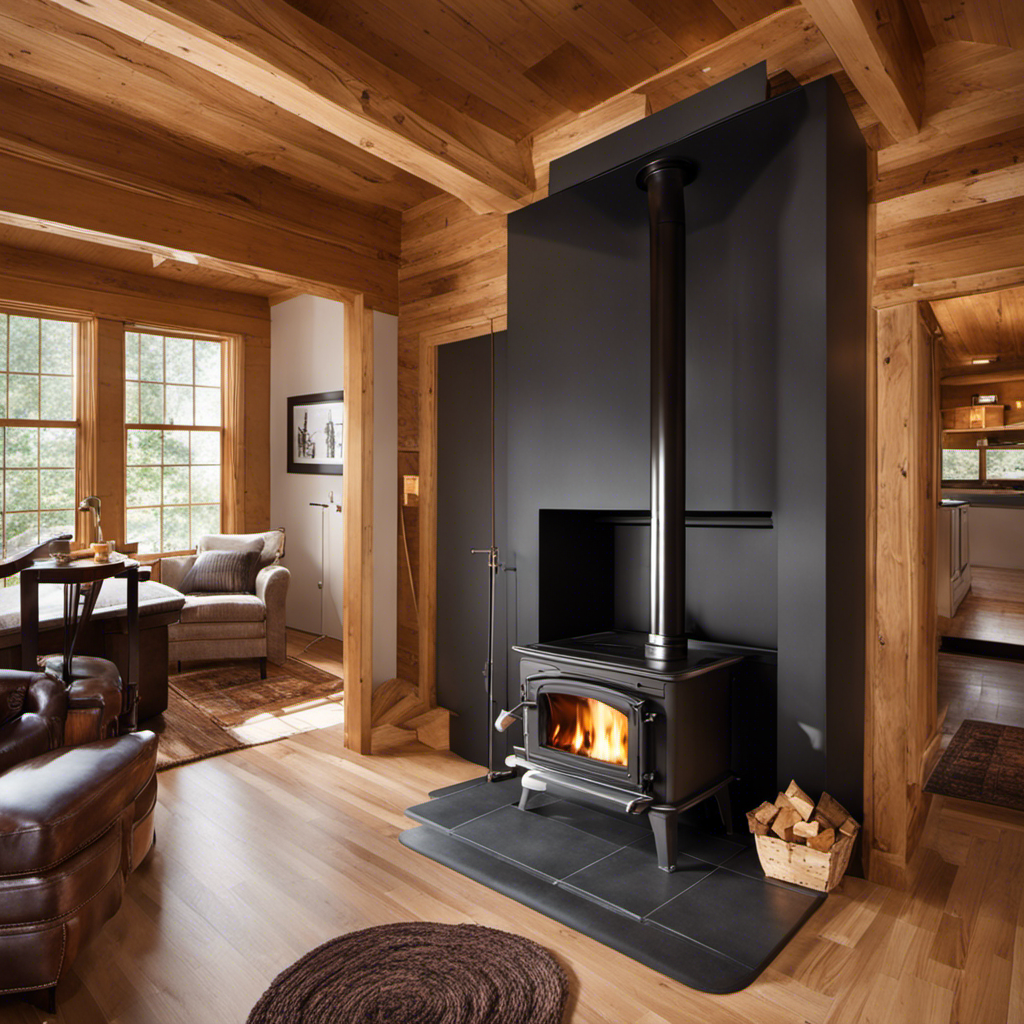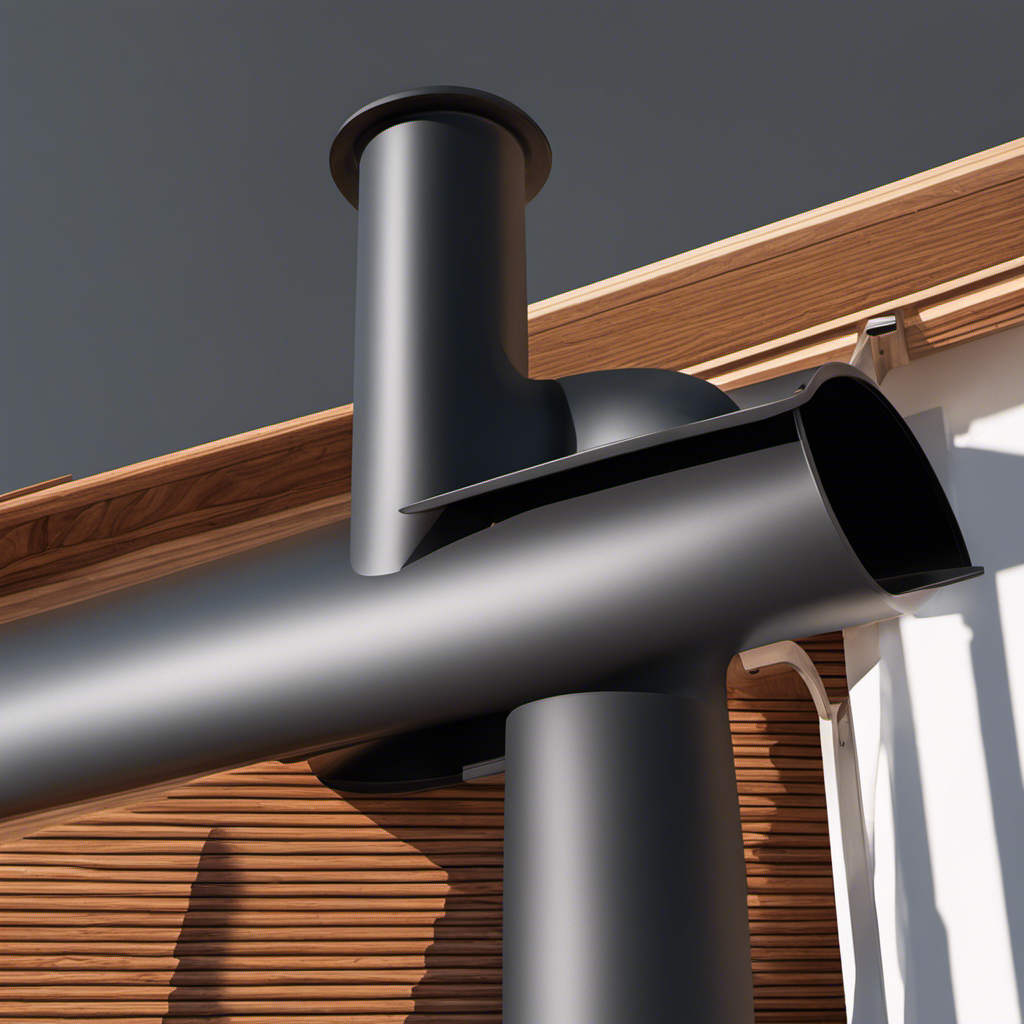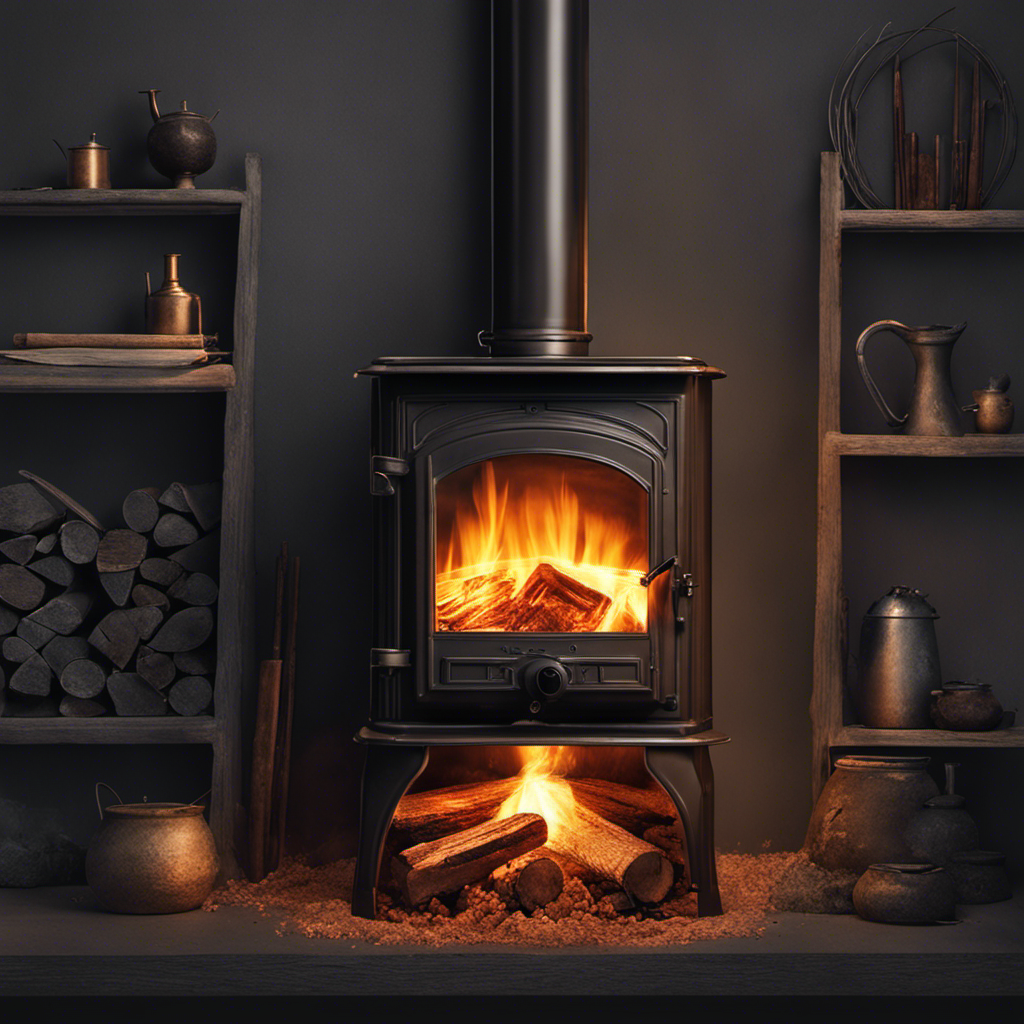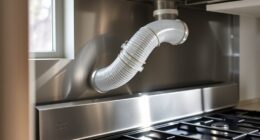I possess specialized expertise in the legal installation of wood stoves. You don’t have to be concerned about violating any regulations or codes.
In this article, I’ll guide you through the process step-by-step. From researching local regulations to choosing the perfect location and installing the necessary ventilation, I’ve got you covered.
Plus, I’ll share safety tips and maintenance guidelines to keep your wood stove running smoothly.
Let’s get started on this cozy and compliant adventure!
Key Takeaways
- Determine if a permit is required for installing a wood stove in your area
- Maintain required clearances between the stove and nearby combustible materials
- Install a ventilation and chimney system to ensure proper airflow and gas expulsion
- Select an EPA-certified wood stove that meets emission standards
Research Local Regulations and Building Codes
I’ve been researching my local regulations and building codes to ensure I meet all the necessary requirements for adding a wood stove legally. Understanding the permit process is crucial in this endeavor.
The first step is to determine if a permit is required for installing a wood stove in your area. This typically involves contacting your local building department or zoning office. They’ll guide you through the necessary paperwork and fees involved in obtaining a permit.
Additionally, it’s important to evaluate the environmental impact of adding a wood stove. Consider the type of wood you’ll be burning and its impact on air quality. Look for wood stoves that are EPA-certified, as they’re designed to burn more efficiently and produce fewer emissions.
Determine the Appropriate Location for Your Wood Stove
After considering the local regulations and building codes, I’ve determined that the appropriate location for my wood stove is in the corner of my living room. This placement not only ensures proper clearance from combustible materials but also maximizes heat distribution throughout the space.
Here are some key factors to consider when determining suitable placement and ensuring proper clearance for your wood stove:
-
Clearances: Maintain the required distance between the stove and nearby walls, furniture, and other combustible materials. This will prevent the risk of fire and allow for proper heat dissipation.
-
Ventilation: Ensure adequate air circulation around the stove to facilitate efficient combustion and minimize the accumulation of harmful gases.
-
Floor Protection: Install a non-combustible floor pad or heat shield beneath the stove to protect the floor from heat damage.
-
Accessibility: Place the stove in a location that allows for easy access for fuel loading, cleaning, and maintenance.
-
Room Layout: Consider the overall layout of the room to ensure that the stove placement doesn’t obstruct traffic flow or create safety hazards.
Install the Necessary Ventilation and Chimney System
To ensure proper airflow and prevent the buildup of harmful gases, I’ll need to install a ventilation and chimney system for my wood stove. Ventilation requirements are crucial when it comes to safely operating a wood stove.
The system should consist of an exhaust pipe that connects to a chimney, allowing the smoke and gases to be safely expelled outside. It’s important to follow local building codes and regulations when installing the chimney.
The chimney installation should be done by a professional who can ensure that it’s properly sealed and insulated to prevent any leaks. Additionally, the height of the chimney should meet the required standards to provide adequate draft for efficient combustion.
Choose a Compliant and Efficient Wood Stove Model
When selecting a wood stove for my home, it’s important that I choose a compliant and efficient model that meets all the necessary regulations. Wood stove efficiency is crucial for reducing energy waste and maximizing heat output. To ensure compliance with EPA regulations, there are a few key factors to consider:
- Look for an EPA-certified wood stove that meets emission standards.
- Consider the stove’s heat output and size to match it with your heating needs.
- Opt for a model with advanced combustion technology for improved efficiency.
Follow Proper Safety Measures and Maintenance Guidelines
I will always follow the proper safety measures and maintenance guidelines to ensure the safe operation of my wood stove. Safety should always be our top priority when it comes to using a wood stove. Here are some important safety precautions to keep in mind:
| Safety Precautions | Maintenance Tips |
|---|---|
| 1. Install a smoke detector and carbon monoxide detector near the stove. | 1. Clean the stove regularly to remove creosote buildup. |
| 2. Keep a fire extinguisher nearby and ensure it is in good working condition. | 2. Inspect the chimney for any blockages or damage. |
| 3. Use a fireproof hearth rug to protect your floor from sparks and embers. | 3. Check the gasket seals and replace if necessary. |
| 4. Keep flammable materials at a safe distance from the stove. | 4. Check the stove’s air vents and adjust as needed for proper combustion. |
| 5. Never leave the stove unattended while it is burning. | 5. Have a professional inspect and clean the chimney annually. |
Frequently Asked Questions
What Are the Common Restrictions or Regulations Regarding Wood Stove Installation in Urban Areas?
Common restrictions in urban areas include minimum setback distances, required permits, and compliance with emissions standards. Wood stove emissions can have a significant environmental impact, so it’s important to follow regulations to ensure safety and minimize pollution.
Are There Any Specific Requirements for the Distance Between a Wood Stove and Combustible Materials?
When adding a wood stove legally, it is crucial to consider the distance requirements between the stove and combustible materials. These requirements ensure safety and minimize the risk of fire hazards.
Can a Wood Stove Be Installed in a Mobile Home or Rv?
Yes, a wood stove can be installed in a mobile home or RV. However, it is important to follow wood stove safety tips and consider the pros and cons before installing one.
Are There Any Building Code Requirements for the Size or Dimensions of the Chimney for a Wood Stove?
Chimney size requirements vary based on local building codes and the specific wood stove installation. It’s crucial to consult with a professional to ensure the dimensions and design meet legal standards.
What Are the Maintenance Guidelines for Keeping a Wood Stove in Good Working Condition?
To keep a wood stove in good working condition, regular maintenance is key. Here are some tips for wood stove upkeep: clean the chimney regularly, inspect and replace worn gaskets, and ensure proper air flow.
Conclusion
In conclusion, it’s crucial to follow local regulations and building codes when adding a wood stove to your home. By researching and complying with these guidelines, you can ensure a safe and legal installation.
Additionally, selecting the right location, installing proper ventilation and chimney systems, and choosing an efficient wood stove model are essential steps for a successful installation.
Remember to always prioritize safety and perform regular maintenance to ensure your wood stove operates smoothly and efficiently.
So, go ahead and bring some cozy warmth into your home with a wood stove, but do it the right way!
Logan’s affair with adventure began in childhood. He hailed from a small town where vast forests bordered one side and endless shores stretched on the other. His days were spent exploring uncharted woods, climbing tall trees, or listening to the tales of old sailors. This early immersion in a world brimming with stories and mysteries became the foundation of his passion for writing.











